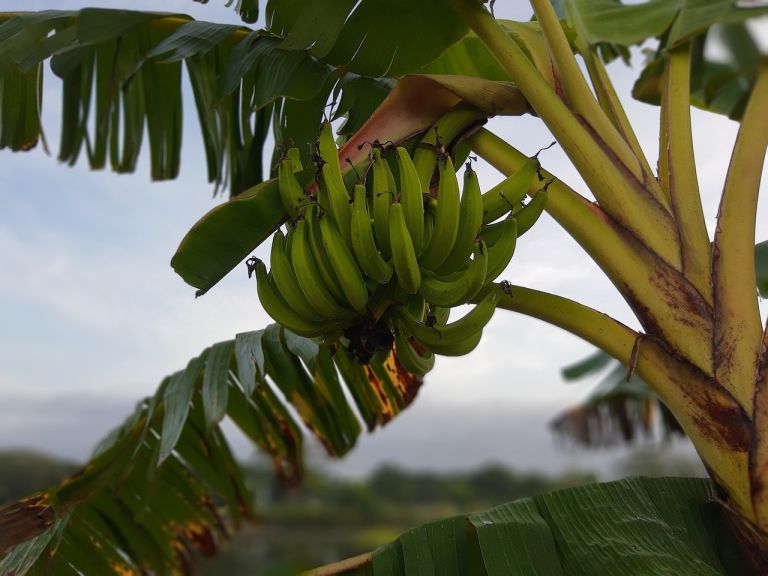
Choosing the Right Location
Banana trees flourish in warm climates, with some varieties tolerating cold. Selecting an appropriate planting location outdoors is crucial. The area should be shielded from strong winds to prevent leaf damage. Incorporate fresh compost into the soil and ensure ample space for your tree’s growth.
Watering and Fertilizing
Banana trees require substantial water, especially during the growing season from spring to fall. Daily watering may be necessary in summer to maintain soil moisture. Regular fertilization is also essential throughout the growing season. Once the banana clusters, known as hands, appear in late summer, harvest the green, full fruit and let it ripen in a cool, dry place.
Light Requirements
Banana plants generally favor full sun, implying direct sunlight for at least six hours daily. However, some types are prone to scorching and do better in partial shade.
Soil Preferences
Banana plants thrive in deep, well-draining soil rich in organic matter with a slightly acidic pH. They typically have a low tolerance for soil salinity.
Watering Needs
Originating from tropical rainforests, banana trees need ample water and atmospheric moisture. Planting them in close clusters helps retain leaf moisture. Ensure the soil stays consistently moist but not waterlogged to avoid root rot.
Temperature and Humidity
Banana plants prefer warm, humid conditions but don’t tolerate extreme temperatures. Ideal temperatures range from 75 to 95 degrees Fahrenheit. Even cold-hardy varieties can die back quickly in cold, dry conditions. Daily leaf misting can help increase humidity levels.
Fertilizer Application
Banana trees are heavy feeders, requiring balanced fertilizer application throughout the growing season. Annually adding compost to the soil enhances its organic content.
Pruning Practices
Before the tree bears fruit, prune it to maintain a single main stem. Allow one sucker, a small sprout at the stem’s base, to grow for six to eight months. This sucker will replace the main stem in the next growing season. After fruit harvest, cut the main stem to 2.5 feet and remove the rest a few weeks later, leaving the replacement sucker.


